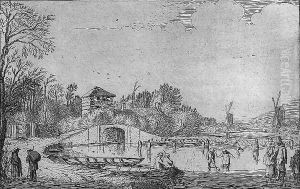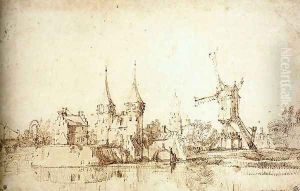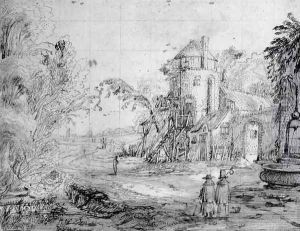Jan van de, II Velde Paintings
Jan van de Velde II was a notable Dutch Golden Age artist and engraver, born in 1593 in Rotterdam, Netherlands. Although he is sometimes confused with other artists of similar names from the same era, Jan van de Velde II is best remembered for his contributions to the development of printmaking, particularly etching, in the early 17th century.
Jan was the son of Jan van de Velde I, a teacher and the author of a famous writing manual. He likely received his initial training from his father, which influenced his refined line work. His family moved to Haarlem when he was a child, where he was apprenticed to engraver Jacob Matham, the stepson of the renowned Hendrick Goltzius. Matham's influence can be observed in van de Velde's early works, which include landscapes, genre scenes, and religious subjects.
As an artist, Jan van de Velde II is credited with being one of the pioneers in the use of the etching technique, which was relatively new at the time compared to engraving. His etchings often depicted landscapes and everyday scenes, displaying a remarkable attention to detail and a mastery in capturing light and atmospheric effects.
In addition to landscapes, van de Velde also produced a significant number of genre prints, which depicted scenes of daily life. These prints were popular during this time as they provided a glimpse into the lifestyles and customs of the Dutch middle class. His works are characterized by a dynamic composition, with a strong emphasis on the narrative element of the scenes he chose to depict.
He also worked as a calligrapher, and in 1620 he published 'Spieghel vande Nederduytsche Letterconst', a writing manual that showcased his skill and was widely disseminated. This manual, along with his prints, helped to spread his reputation beyond his hometown.
Jan van de Velde II's career was prolific, and his works were highly regarded by his contemporaries. His etchings contributed significantly to the visual culture of the Dutch Republic and influenced subsequent generations of artists. He died in Enkhuizen, Netherlands, in 1641. Today, his works are held in numerous museum collections around the world, where they continue to be studied and appreciated for their artistry and historical value.


